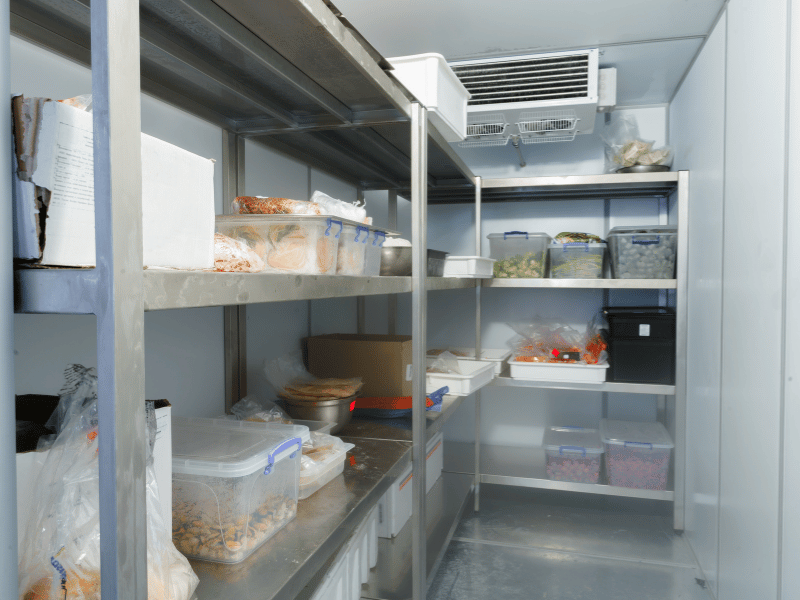As the days get longer and the temperatures begin to rise, it is time to ensure your walk-in coolers and freezers are ready to handle the increased demand and strain of summer. Proper maintenance, particularly during spring, can prevent costly breakdowns and emergencies, ensuring your business runs smoothly throughout the warmer months. This article will explore the importance of spring maintenance for walk-in coolers, focusing on cleaning the coils and testing the units for proper use.
Why Spring Maintenance Matters
The efficiency and longevity of walk-in coolers and freezers are heavily influenced by regular maintenance. Spring is an ideal time for this upkeep for several reasons:
- Rising temperatures: As the weather warms up, the units have to work harder to maintain the desired temperature. Proper maintenance helps to ensure that the units are in optimal condition to handle this increased strain.
- Planned maintenance: Attending to potential issues before the peak summer season can help avoid emergencies and the associated costs. This is particularly important for businesses that rely on these units to store perishable goods, where a breakdown could lead to significant financial losses.
- Increased efficiency: Properly maintained walk-in coolers and freezers consume less energy, which not only reduces your business’s carbon footprint but also lowers your energy bills.
Cleaning the Coils
One of the most critical aspects of spring maintenance for walk-in coolers and freezers is cleaning the coils. Over time, dust, dirt, and debris can accumulate on the evaporator and condenser coils, reducing their efficiency and forcing the unit to work harder to maintain the desired temperature. This added strain can lead to premature wear and tear, higher energy consumption, and potential breakdowns.
Cleaning the coils during spring maintenance involves the following steps:
- Disconnect the power: Always start by switching off the power supply to the unit to ensure safety during cleaning.
- Remove the protective cover: Depending on the model of your walk-in cooler, you may need to remove a cover or grille to access the coils.
- Use a soft brush or vacuum: Gently clean the coils using a soft brush or vacuum cleaner with a brush attachment. Be careful not to bend or damage the fins during this process.
- Inspect the coils: After cleaning, inspect the coils for any signs of damage or corrosion. If you notice any issues, contact a professional technician for further assessment and repairs.
- Replace the protective cover: Once the coils are clean and inspected, replace the protective cover and ensure it is securely fastened.
Testing Units for Proper Use
In addition to cleaning the coils, it is crucial to test the walk-in coolers and freezers for proper use during spring maintenance. This ensures that the units are functioning optimally and efficiently. Key aspects to check include:
- Temperature control: Ensure that the thermostat is working correctly and maintaining the desired temperature. If the temperature fluctuates or is not accurate, it may require recalibration or replacement.
- Door seals: Inspect the door seals for any signs of wear, damage, or gaps that may allow cold air to escape. Replace damaged seals as necessary.
- Drainage: Check the drainage system for any blockages or leaks that may cause water to pool inside the unit. This can lead to the growth of mold and mildew, affecting the stored products’ quality and safety.
- Electrical connections: Inspect the electrical connections for any signs of corrosion, frayed wires, or loose connections. If you notice any issues, contact a professional technician for repairs.
Spring maintenance of walk-in coolers and freezers, including cleaning the coils and testing the units for proper use, is crucial to ensure their efficiency, longevity, and optimal performance throughout the warmer months. By taking the time to carry out these essential tasks, you can prevent costly breakdowns, reduce energy consumption, and protect the quality of your stored products. With temperatures rising and the strain on these units increasing, make spring maintenance a priority to keep your business running smoothly and avoid any emergencies during the peak summer season. Don’t wait until it’s too late; invest in preventative care now to save time, money, and potential headaches down the road.
Need help, contact our team of professionals today.






